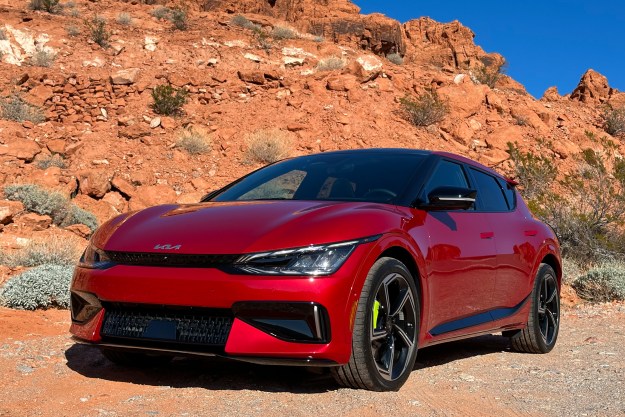
Honda began delivering its new Fit EV to customers over the weekend, with a California couple the first to receive the keys to their all-electric hatchback.
Matt and Becky Walton of Ventura County received their EPA rated 118 MPGe battery-powered electric on Friday. The longtime Honda owners — who purchased their first Honda back in the 1970s — will no doubt be extremely excited over their gasoline-forsaking Fit, and to bear the distinction of being the very first customers to sit behind the wheel of their own Fit EV. Perhaps less exciting though is how they came to be number one: The couple beat everyone to the punch and received the maiden production model simply by signing up to lease the $389-a-month electron-powered Fit earlier in the year before anyone else.
In a statement, Matt said, “It’s truly an honor to take delivery of the first Honda Fit EV and participate in the advancement of all-electric vehicles in the real world.”

Unfortunately, that “participation” in the “real world” is rather narrow in scope as Honda is only offering the Fit EV on a three year lease and in select markets (read: Oregon and California), but says it will expand to six East Coast markets by 2013. The Japanese automaker has taken a decidedly cautious approach to the electric vehicle market and will no doubt look to customers like the Waltons for feedback on the Fit EV as it continues to explore various alternative energy vehicles, like its FCX Clarity hydrogen fuel cell EV, Civic Natural Gas, and Civic Hybrid.
Nevertheless we’re excited for the Waltons and hope they, and all the other scheduled lessees, enjoy their Fit EV as much as we did. Should the car resonate with consumers, Honda could very have a hit in the Fit EV.
For more information on the 2013 Honda Fit EV, check out our initial drive impressions.
Editors' Recommendations
- The Maserati GranCabrio Folgore is one of the best-looking EVs yet
- Tesla faces new rival as a tech giant launches its first EV
- 2024 Chevrolet Equinox EV: price, release date, range, and more
- This couple just did something remarkable in an EV
- Bold style alone can’t muscle Chevy’s new Blazer EV to the head of its class


